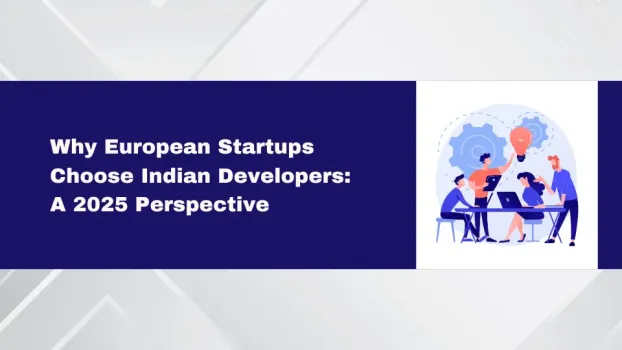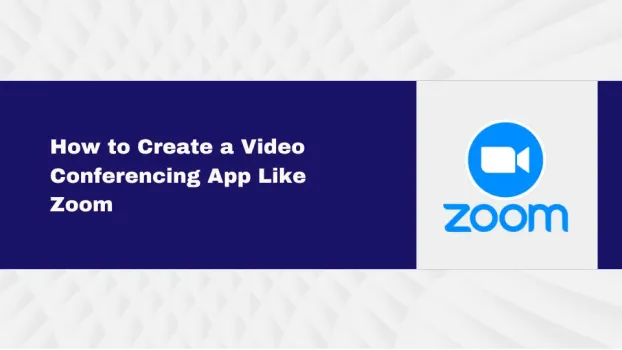
We provide continuous system monitoring, timely updates, and expert issue resolution, ensuring your digital platforms operate seamlessly with maximum uptime and minimal disruptions.
Pioneering customized web and mobile application development with a focus on excellence.

Global Clients
Successfully Projects
Years of Excellence
Client Retention





With expertise in almost every programming language, our 4,000+ team delivers dynamic solutions that align with modern business demands.
Node Js
React Js
Laravel
Python
Flutter
Java
Swift
Codeigniter
Artificial Intelligence
Machine Learning
Kotlin
React Native
When excellence matters, choose WebOConnect. We combine creativity and precision to deliver superior web and mobile solutions, tailored for your success.
Every partnership reflects the trust and confidence our clients place in us. Together, we create impactful solutions that inspire growth and pave the way for long-term success.
Healthcare
Finance
Retail & E-commerce
Education
Travel & Tourism
Real Estate
Media & Entertainment
Automotive
Lifestyle
Productivity
Beauty
Communication

Suppose you’re building a startup in Germany or the Netherlands. In that case, you already know the challenge: the idea is solid, maybe even tested, but hiring developers for startups who are affordable, available, and aligned with your pace? That’s the real bottleneck. It’s no secret that the local tech talent pool is stretched thin and expensive. For early-stage founders, the decision of how to hire developers for your startup isn’t just a hiring issue; it’s a strategic one. So, what’s actually working in 2025 for agile, product-driven startups in the EU? Let’s explore the developers hiring models that matter and why more European startups are turning to dedicated remote developers from India as a serious, sustainable solution. Why Traditional Hiring in Germany & the Netherlands Isn’t Startup-Friendly Startups move fast, but traditional hiring doesn’t. On average, hiring a full-time developer in Germany or the Netherlands takes 2 to 5 months, and that’s if you can even find the right talent. Even then, salaries for skilled developers are rising. A senior full-stack developer in Berlin or Amsterdam can cost €80,000–€120,000 annually, not including benefits, taxes, and overhead. According to the European Commission, 42% of EU-based SMEs cite tech talent scarcity as a major barrier to innovation. That’s not just a stat, that’s your reality if you're trying to build and launch an MVP. When you’re looking to hire developers for a startup, those delays and costs can kill momentum. That’s where the right hiring model becomes your secret weapon. Developer Hiring Models: Your Three Main Options Most founders explore one of these hiring paths. Each has trade-offs, especially in the context of early-stage needs. 1. In-House Hiring This is the traditional route: full-time, local employees on payroll. Pros: Strong culture fit, control, local market familiarity. Cons: High costs, slow hiring, limited talent pool. 2. Freelancers / Gig Platforms Good for small tasks or emergency fixes, not ideal for core product development. Pros: Flexible, low-commitment, fast to onboard. Cons: Inconsistent output, lack of ownership, coordination headaches. 3. Dedicated Remote Developers (India, Eastern Europe, LATAM) This model is growing fast, especially among EU startups. Pros: Pre-vetted, reliable, cost-effective, timezone-compatible teams. Cons: Needs good management and communication structure (which is easier than you think). Why Dedicated Indian Developers Make Business Sense (Now More Than Ever) Let’s address the elephant in the room: why India? It’s not just about cost savings (though that helps). It’s about quality + startup-readiness. India is home to over 5 million software developers, many of whom are trained in agile, fluent in English, and experienced in building MVPs for European clients. At WebOConnect, we’ve worked with several founders from Berlin to Utrecht who were initially skeptical, but after one sprint, became full believers. Here’s why dedicated resources from India are thriving: Affordability without sacrificing skill. A culture of ownership and long-term collaboration. Our developers do not just write code, but ship value. Time-zone alignment, we work as per your requirement. Pre-vetted developers with various experience levels to choose from. Clear milestone setting from the very start, so that you know what to expect and when to expect. Responsive team for all your queries and questions, just like your own extension. Case Studies: Real Work That We're Proud Of Qoach.io (Revolution in Coaching Marketplace) A coaching marketplace where users can get a coach by telling their actual problem. No more finding coaches by genre and specialities. But a step ahead, where you type your problem and our AI-based matchmaker finds you the real fits based on your needs and their experiences. Also, coaches can enroll with Qoach.io and share their valuable insights via feed to let people searching for them know about their wisdom. WebOConnect’s dedicated team made this happen live in weeks and still performed add-ons as required. Everything went on time and smoothly, without any complexity or concerns from the client. Terp2Go (Assistive Tech - because inclusivity is what we all deserve!) An educational institute hired us to develop a SaaS platform where inclusivity is the priority. This platform was made for deaf and hard-of-hearing individuals to let them consume content they generally cannot. An organization can assign an interpreter who then converts all kinds of content that they are assigned into American Sign Language. Now, whoever the organization wants can access the content just by logging in. To explore more examples, visit our case study page. Expert Tips for Managing Remote Indian Developers You don’t need to micromanage to make this model work. Here’s how to make the most of it: Start With a 3-day Free Trial Before full commitment, get a 3-day free trial. It reveals technical skill, response time, and communication habits. Align Timezones Smartly We work in alignment with you as per your working hours needs. Over-Communicate, Then Relax Use Slack, ClickUp/Jira, Loom, and Google Meet. Establish async updates. Once you have rhythm, the team runs itself. Clear Milestones, Actual Results The best developer hiring models rely on clarity. Define tasks, deliverables, and timelines clearly from Day 1. When to Use Remote Developers vs Build In-House Here’s a helpful decision table based on your startup stage: Stage Recommended Model Why It Works MVP / Pre-seed Hire dedicated developers from India Fast, affordable, flexible, agile Post-seed scaling Hybrid (core team + remote developers) Stable yet nimble, scalable Series A / Expansion Begin building a full in-house team Focus on long-term culture and retention Remember: you’re not choosing remote instead of in-house — you’re choosing remote until in-house makes sense. So, What’s the Best Way to Hire Developers for Your Startup? If you’re in Germany or the Netherlands and trying to move fast with limited capital, hiring dedicated remote developers, especially from India, is one of the smartest moves you can make. Why? You access skilled developers who’ve worked with startups before. You avoid the slow, expensive European hiring cycle. You stay focused on growth, while your devs stay focused on shipping. Whether you're building the next big thing in healthtech, edtech, or SaaS, your hiring model should support your startup stage, not slow it down. Final Thoughts: Flexibility Is the Real Hiring Advantage In 2025, rigid org structures and bloated in-house teams are out. Smart, flexible execution is in. Choosing the right developer hiring model means balancing quality, speed, and cost. For most early-stage startups in the EU, remote developers in Europe or India give you the leverage to move quickly without burning through your capital. Don’t wait three months to make your first hire. Don’t overspend before product-market fit. Instead, start smart, stay lean, and build with developers who care about your outcome, not just your hourly rate. FAQs Q: How much does it cost to hire a developer? Hiring dedicated developers for startups costs differently for everyone, depending on the project and other requirements. One can use WebOConnect’s calculator to find out the average cost. Simply, you can enter your requirements from drop-downs available, such as selecting language, experience, no of developers, kind of model you prefer, etc. To get a personalized quotation, one can always book a free consultation call with us. Why does a startup need dedicated developers? Hiring dedicated developers is way easier than hiring an in-house team or scaling your in-house team. There are various hiring models for developers for startups, but hiring dedicated resources is way more cost-effective, responsive, and needs no training at all. At WebOConnect, you will get a minimum of 6 months of experienced professionals with the option to add project managers and testers too. Which place is the best for hiring developers for startups? In recent times, India has risen as a superpower. Dedicated developers in India are meeting global standards, along with adding value to the product. Not only for coding but to bring your vision to life, Indian developers are innovative and quick to produce solutions your startups need. WebOConnect provides you with pre-vetted developers, works in time zone alignment, and provides you with the best tech stack offering scalability. How can I hire a developer for a startup in India? Hiring dedicated developers from India is comparatively easy these days. All you need to do is search for reputed brands like WebOConnect that fulfill your needs and provide you with benefits that can help your startup scale effortlessly as per your budget. Start with a checklist of what you need. Find out the brands that are collaborative and seem fulfilling. Get deeper insights using the portfolio of the brands providing the services you need. Here is WebOConnect’s portfolio for your reference.
Read More
Tech outsourcing is increasing in almost every area of the globe. Allowing European businesses to hire Indian developers as their team extensions. With remote culture, a lot of things, once unimaginable, are possible. One of them is outsourcing the product development or scaling your team whenever & wherever. In this article, see the Surge, based on practical insights about how startups in Germany and the Netherlands are increasingly turning to Indian developers to fuel their innovation. Tech-Talent Scarcity in Europe: An Urgent Aspect to Look Out For! With the growing scarcity of tech professionals in Europe, the country is shifting towards offshore hiring, including hiring remote team developers. Here are a few reasons why Europe is facing this issue: Widening Skill Gap: Finding tech professionals with up-to-date skills has been a challenge in Europe for a while now. The gap between demand and supply is surging, and for emerging areas like AI, cybersecurity, ML, and full-stack development, there are no experts available on a large scale. Startups vs. Tech Giants: Large organizations' higher incentives and inability to meet the supply and demand cause startups to move out to acquire talent within their budget. Moreover, bigger organizations there look more promising than newly established businesses. Germany & Netherlands Specifics: Few countries like Germany and the Netherlands are suffering from this a lot as there is less availability, making prices hike up for hiring, increasing their costing and making products more expensive. Hiring Delays Are Costly: No available developer means increased downtime, or you might need to keep them engaged throughout even when there is no need for a developer, just to make sure you get them when you actually need them. Sounds exhausting? Actually, it is. India Emerges as a Top Choice: Having this impractical shortage of developers in Europe, the doors for Indian developers with their great coding skills are opening. As the startups need fast, reliable, and affordable talent, India is emerging as their top choice. Mindset Shift in Startup Owners: As far as slow and steady sounds good and calming, the era is all about speed. Founders are more open to global hiring because they dream to be the industry leaders from Day 1. Hence, hiring expert resources is not just a backup, but a core part of their growth strategy. Why India? A Global Tech Powerhouse The next question that might hit your mind is, “Why India?” As there are so many countries bringing so many opportunities to hire remote developers, how come startups are hiring Indian developers more? Here is the answer to your curiosity: A Deep Talent Pool That’s Skilled, Diverse, and Scalable Today, India is a tech superpower. European startups are hiring Indian developers not only because they are affordable but also to get access to one of the world’s largest and most future-ready tech talent pools. With India's population and skillset opportunities, this country produces over 1.5 million engineering graduates annually. A dynamic, skilled workforce in abundance. Moreover, these developers have full-fledged knowledge of everything, from full-stack development and AI to cloud infrastructure and cybersecurity - you name it. Hiring dedicated Indian developers gives startups the much-needed ability to scale teams whenever required, add specialized skills in every scenario, and push product updates faster with time zone alignments and within their budgets. India, A Trusted Name in Tech Outsourcing India’s journey in tech outsourcing is evidently old enough. For decades, the country has delivered top-notch software solutions to global giants like IBM, Microsoft, and SAP. The pre-vetted Indian developers are setting a legacy of excellence with their innovative and quality products. Following that, in recent years, fast-moving startups across Europe have started to hire Indian developers for their core programming needs, such as building MVPs, managing end-to-end product development, and much more. With hands-on experience, Indian developers consistently meet international compliance standards, deliver clean code, and work efficiently with cross-cultural teams. As outsourcing to India becomes their main talent acquisition need. Remote-Ready, Collaboration-Focused Startups these days have a great hold on working remotely. It all started with a trend and a little push from the pandemic, but now, 5 years down the line, it has become the need of the hour and the most strategic move for European businesses to hire affordable as well as responsible developers. So many founders now choose to hire remote developers from India. Moreover, the Indian companies are embracing the remote-first mindset as well. From increasing fluency in collaboration tools like Slack, Trello, Notion, and GitHub to aligning time zones with European schedules, Indian developers are showcasing immense support. iWith this remote-ready approach, Indian teams can simply be equipped to work as an extension of your in-house team, not as mere external contractors. Indian Developers - The Innovation Partners Every tech startup in Europe is enjoying the value addition they are getting by hiring Indian developers. From a Berlin-based AI startup or a healthtech founder in Amsterdam, working with Indian developers isn’t just about outsourcing—it’s about co-creating. Many Indian startup developers now offer product consulting, architecture suggestions, and long-term development partnerships. It’s this mindset that has made Indian startup hiring developers a key strategy for scaling globally. From bootstrapped founders to VC-backed scaleups, more and more European startups are hiring dedicated Indian developers to bring ideas to life faster, smarter, and more affordably. Cost-Effectiveness Without Cutting Corners If you are still thinking India’s affordable rates mean low quality? Think again! Hiring a senior developer in Germany or the Netherlands could cost you anywhere from $70–$120/hour, while in India, equally skilled talent often comes in at $25–$50/hour. That’s budget-friendly, and you can always have a Slack for team extension with the availability of developers. European startups working with Indian teams are using those savings to double down on growth, marketing experiments, and faster MVP rollouts. Moreover, India’s top tech talent is often trained at global standards, with many developers experienced in working with Fortune 500 clients. Here, the point of compromising on quality does not arise at all, rather, you’re optimizing for smarter, more scalable innovation. Time Zone Synergy & Faster Turnarounds India’s 3.5 to 4.5-hour lead over Central Europe creates a surprisingly powerful workflow advantage. European teams can hand off tasks at the end of their workday, and by the time they return in the morning, Indian developers have already made significant progress, sometimes even delivered the final product. Communication & Culture: Surprisingly Aligned One of the biggest myths about outsourcing is the fear of communication breakdowns. With Indian developers, that’s rarely the case. English is widely spoken and used in India. Mostly, all the developers are trained to collaborate with Western clients from day one. They’re familiar with Agile, Jira boards, Slack etiquette, and even European business humor! Cultural adaptability is a strong suit, which means fewer misunderstandings and smoother workflows. Flexible Engagement for Agile Startups Whether you need a full-stack team for 12 months or just one developer for a 3-week sprint, India offers unmatched flexibility. Startups can tap into a wide pool of freelancers for all their needs. More importantly, Indian developers are incredibly agile in both mindset as well as execution. They’re used to iterative builds, quick pivots, and scaling projects up or down as priorities shift. This flexibility is gold for startups navigating uncertain markets or running rapid A/B testing cycles. Real-World Examples: What Germany & Netherlands Are Doing Still confused about whether this will work out or not? Germany is Investing in India's Tech Ecosystem Some noticeable events: Bavarian Investments in Karnataka: Bavarian companies are expanding their presence in India, especially in Karnataka. Including approximately 36.9 million USD investment by Krones and a collaboration between Renk Group and Quantum Systems to locally develop military drones. More than just coding, R&D as well: A KPMG-AHK survey revealed that by 2028, 25% of German companies plan to leverage India for R&D, a significant increase from 9% in 2023. This shift underscores India's growing importance in Germany's innovation strategy. Netherlands: Outsourcing and Innovation Partnerships Also, the Dutch firms are quite interested in tech outsourcing from India due to local talent shortages and regulatory complexities. Not only are startups there, but also the tech giants are setting up dedicated tech hubs or forming long-term partnerships with Indian developers. Tech Outsourcing: According to Whitelane Research's 2024 Dutch IT Sourcing Study, 74% of Dutch organizations plan to maintain or increase their IT budget allocation. The primary need is access to Indian resources and talent by 56% India as a Preferred Outsourcing Destination: Another study by Grid Dynamics found that 18% of Dutch companies are outsourcing software development to India. This is not only one-sided, but rather bilateral: More than 200 Dutch companies have a presence in India. Namely, companies like Royal Dutch Shell, Unilever, and Philips. Likewise, over 300 Indian companies operate in the Netherlands, such as Tata Consultancy Services, Infosys, and Wipro, spanning sectors like agriculture, health, port and shipping, science and technology, and urban development. Common Concerns & How Startups Address Them As a European startup or an enterprise interested in hiring dedicated Indian developers, there are a few concerns that feel alarming and keep one from doing the same. Let us understand the concerns and debunk the myths: Time Zone Coordination: Quality Issues Delays in Projects IP Protection Secured Communication Work Status and Updates These are the few common Concerns before you hire dedicated resources offshore. To counter this, we have already discussed a few pros about hiring remote developers from India. Most of the professionals are ready to work in time zone alignment or in the time zone you need. Flexibility is always the top-notch approach of Indian developers. Being vetted as per global standards for quality has never been an issue there. It's just a myth. Startups can easily mitigate risks related to structured onboarding, secure contracts, and communication tools. To discuss this in detail, hop on a call with us today. With hiring remote teams from India, get transparency and milestone-based delivery for free. Conclusion: Building the Future Together Hire Indian Developers for yourself and see the difference they make. With WebOConnect Technologies Private Limited, get on-time delivery, super-experienced professionals, time-zone alignment, backup resources ready, a technical project manager, and most importantly, top-notch ethical standards. We work with your startup or enterprise like your extended team that is always available and responsive. Count on us and soar high with innovative solutions. Check out our portfolio today!
Read More
The increase in work-from-home and virtual meetings has increased the need for video conferencing app development. These platforms are very important for businesses and individuals in particular to interact with each other hence making applications such as Zoom very vital. By reading this learners’ guide, you will understand the core features, essential steps, costs, and challenges of developing an app similar to Zoom. Are you ready to maximize the opportunities your business can create? Let our professionals guide you through implementing regular updates and solid enhancements to your website. Contact us today! 1. Exploring the Demand for Video Conferencing Apps These industry trends for video conferencing reveal constant customer demand for solutions that guarantee security, reliability, and rich functionality. In these tools, business value benefits are associated with aspects such as versatility, manageability, and security. Why do apps like Zoom manage to be successful while similar ones fail? Simple, Zoom provides good sound and picture quality video calls which is a core requirement, effective collaboration tools, and most importantly global access as these are fundamentals of a similar app. 2. Dimensions of Android Video Conferencing Apps To ensure a competitive edge, your app should include the following video call app features: High-Quality Video and Audio: There is a need to have high-definition video and well-defined audio on the rooftop to enhance the user experience. Screen Sharing: Critically important for any presentation where many people are working together, particularly in the business setting. Chat Functionality: At work allow the use of instant messaging during a call to enhance the flow of information. Recording: Allow users to record meetings for reference in the future. Multi-Platform Support: Ensure the use of compatibility with mobile, desk, and browser-based platforms to effectively access its content. Virtual Backgrounds: Offer professional and/or themed backgrounds for business or individual purposes. Security Features: Create highly safe video conferencing applications with features like end-to-end encryption, password password-protected meetings. Scalability: Accommodate a big group of participants in group meetings of up to hundreds of people. Such features of the video conferencing apps make them friendly to use and essential in the current world market. 3. Process to Create Apps with Safe Video Conferencing Market Research: Evaluate competitors, investigate the video conference industry, and determine customer suffering points. Define Your USP: These could be items like transcription based on artificial intelligence or even live translation from one language to another. Select a Technology Stack: WebRTC should be used for real-time media capturing and transferring together with the back-end systems that would guarantee data safety. Focus on UI/UX: Make the necessary layout beautiful and easy for a user to find the necessary options. Test Rigorously: Make sure the app functions smoothly under these conditions in terms of traffic and bandwidth amongst others. With all of these measures in mind, you can quickly create unique, safe video communication applications. 4. Cost to Build Zoom-like App The cost to build a Zoom-like app depends on various factors, including: Features: Applications with simple functionality are cheaper, and complexity contributes to the higher cost of the app. Team Size: The fact of attracting an experienced team of developers has a critical impact on your budget. Technology Stack: The application of sophisticated technology like AI or blockchain technology has the effect of raising expenses while on the other side enhancing effectiveness. Geographic Location: Development costs are proportional to the expenses of the region; outsourcing to an inexpensive area is inexpensive. The final price can come out to be anywhere near $30,000 to $150,000 to build a secure, feature-rich video conferencing app like Zoom. 5. Managing Key Challenges in Video App Development Creating a secure, user-friendly app involves overcoming challenges like: Security Concerns: This simply requires Arduino to focus on encryption and the use of multi-factor authentication to ensure user data is secure for a video application. Scalability: Your app should be optimized to run most of the large meeting processes with efficient performance. Compatibility: Maintain the applications’ ability to run smoothly on one screen when accessed from different devices or operating systems. Bandwidth Optimization: Introduce adaptive streaming, that enables the provision of continuous service provision even under low bandwidth conditions. In WebOConnect, we take up this and come up with specific solutions to see that your app is safe, flexible, and optimized. 6. Advantages of Working with WebOConnect At WebOConnect, we specialize in video conferencing app development, providing: Software solutions created exactly for your business requirements. Innovative security measures for shored-up secure video appliance interaction. Solutions to cater to expanding user populations. Experience in developing applications that conform to today’s video conferencing industry standards. Choose us and get an application that will stand out with its reliability and readiness for future developments. Looking for ways to advance your business? We have experts who will ensure that your website suits your needs as you need it. Get started with us now! Conclusion: Collaborate with WebOConnect for Your Next Big Idea To develop an application that competes with the Zoom app, concern yourself with the best user experience, unique features, and a secure application. Studying the market needs and learning where your app can help remove the drawbacks that can hinder its success in the app store. If you are ready now to develop a secure video app then contact us. Consult with WebOConnect for experienced directions and advanced tools. Please feel free to contact us today for your project to begin. Need assistance from experts to avoid these mistakes? Please get in touch with us for an accurate and efficient way to implement it for your line of business. FAQs: Q1: How much does it cost to create an application like Zoom? A1: The estimated cost is from $30000 to $150000 based on the features, the number of the team, and the technology used. Q2: What are the most important elements of the video conferencing applications? A2: It has features such as video, video resolution, chats, records, compatibility, and full encryption. Q3: What measures can be taken to make my video conferencing app secure? A3: To ensure that communication and user data are secure following measures should be put in place; encryption, password-protected meetings, and multi-factor authentication. Q4: Which technology stack is okay to use when developing a video conferencing app? A4: Also, you can use WebRTC for real-time communication and strengthened by the proper server and cloud solutions such as AWS. Q5: Why WebOConnect for video conferencing app development? A5: We remain capable of providing customized solutions, enhanced security options, and advise, or in terms of compliance in regards to industry trends and set standards.
Read More




